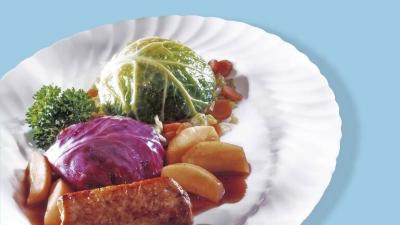Many modern diets trend towards incorporating raw meals, including vegetables, due to the belief that the less processed food is, the better. However, studies indicate that not all vegetables are more nutritious when consumed raw; in fact, some are more nutritious when cooked. Here are nine of them:
**Asparagus**
All living organisms are made up of cells, and in vegetables, important nutrients can sometimes be trapped within these cell walls. Cooking vegetables breaks down these walls, releasing nutrients that the body can absorb more easily. Cooking asparagus breaks down the cell walls, making vitamins A, B9, C, and E more available for absorption.
**Mushrooms**
Mushrooms contain high amounts of the antioxidant ergothioneine, which is released during cooking. Antioxidants help break down "free radicals," which are chemicals that can damage our cells and contribute to disease and aging.
**Spinach**
Spinach is rich in nutrients, including iron, magnesium, calcium, and zinc. However, these nutrients are more easily absorbed when spinach is cooked because it is full of oxalic acid, which prevents the absorption of iron and calcium. Heating spinach releases bound calcium, making it more available for the body to absorb. Research suggests that steaming spinach maintains levels of folate (B9), potentially reducing the risk of certain cancers.
**Tomatoes**
Cooking significantly increases the antioxidant lycopene in tomatoes, associated with lowered risks of a range of chronic diseases, including heart disease and cancer. This increased amount of lycopene comes from heat that helps break down the thick cell walls, which contain many important nutrients. Although cooked tomatoes have a 29% lower vitamin C content, their lycopene content increases by over 50% within 30 minutes of cooking.
**Carrots**
Cooked carrots have more beta-carotene than raw carrots, which is a carotenoid the body converts into vitamin A. This fat-soluble vitamin supports bone growth, vision, and the immune system. Cooking carrots with their skins enhances their antioxidant power, and they should be blanched whole before being cut to prevent nutrient loss into cooking water.
**Sweet Peppers**
Sweet peppers are a great source of antioxidants that boost the immune system, particularly carotenoids, beta-carotene, beta-cryptoxanthin, and lutein. Heat breaks down cell walls, making it easier for the body to absorb carotenoids. As with tomatoes, vitamin C is lost when peppers are boiled or steamed, as the vitamin can leach into the water.
**Cruciferous Vegetables**
Cruciferous vegetables include broccoli, cauliflower, and Brussels sprouts. They are rich in glucosinolates (sulfur-containing phytochemicals) that the body can convert into a range of cancer-fighting compounds. For these glucosinolates to be converted to anticancer compounds, an enzyme within these vegetables called myrosinase must be active. Research has shown that steaming these vegetables preserves vitamin C and myrosinase, along with the anticancer compounds obtainable from them. Cutting broccoli and allowing it to sit for at least 40 minutes before cooking activates the myrosinase enzyme. Similarly, cooking sprouts produces indole, a compound that may lower cancer risk, and cooking them also breaks glucosinolates into compounds known for their anticancer properties.
**Green Beans**
Green beans have higher levels of antioxidants when baked, microwaved, grilled, or even sautéed compared to boiling or pressure cooking.
**Kale**
Kale is healthier when steamed as it deactivates enzymes that prevent the body from using iodine, which is necessary for the thyroid gland and helps regulate metabolism. High temperatures for all vegetables, along with longer cooking times and larger amounts of water, can lead to greater nutrient loss. Water-soluble vitamins C and many B vitamins are the most unstable nutrients when it comes to cooking, as they leach from vegetables into the cooking water. Experts recommend avoiding soaking them in water, using the least amount of water possible when cooking, and utilizing other cooking methods like steaming or roasting.
Source: medicalxpress




